Balancing DHWS Return with CircuitSolver®
To download the printable PDF version of this application, click here.
The Trouble In The Return
During periods of no use, domestic hot water recirculation systems(DHWS) function as a closed loop. The mixing valve will utilize the water from only the return line and water heater since no additional cold water can enter the system.
When an excess of return flow is directed to the water heater, the system’s water temperature will gradually rise until it equals the storage tank temperature. Conversely, if too much return flow is directed to the mixing valve, the temperature throughout the system will decrease to ambient temperature.
Traditional Solution
Conventionally the way to solve this issue involves installing a manual balancing valve between the water heater and the return flow into the water heater. However, the flow requirement is typically set based on estimation rather than automatic adjustment to accommodate the evolving dynamics of a recirculating hot water system. Consequently, this design can result in gradual temperature increases or decreases over time. ater system.
Thermostatic Solution
A more effective approach to balancing a DHWS return is to use a thermostatic valve, such as CircuitSolver®, instead of the manual balancing valve. The set-point of the CircuitSolver® should match the desired return temperature. When installed on the supply inlet of the return piping to the water heater, the CircuitSolver® will regulate the flow of water back to the water heater in proportion to how cool the return water temperature is relative to the mixing valve output temperature.
When the water temperature at the return valve equals the desired return temperature, the CircuitSolver® would be closed, except for a small bypass, allowing minimal flow back to the water heater. However, as the return water temperature drops below the desired temperature, the CircuitSolver® opens, providing increased flow to the water heater. This effectively mitigates both positive and negative temperature creep.
CircuitSolver® valves will ensure that significant temperature variations, either higher or lower than the mixing valve output temperature, are avoided. It is a temperature solution to a temperature problem.
Example System:
The master mixing valve output temperature is 125°F with a desired return temperature of 115°F, 10°F ∆T. The set-point of the CircuitSolver® in the return line to the water heater should be the same as the CircuitSolver valves at the end of each branch/riser.
How To Select The Correct CircuitSolver®:

What an awesome little device these guys make. It’s a no-brainer. Andy Crossland Principal Mechanical Engineer at Crossland Engineering LLC in Honolulu, HI

CircuitSolver® is a great product - I have never used anything like it. Robert Schrieber Maintenance Manager at Embassy Suites in Brunswick, GA
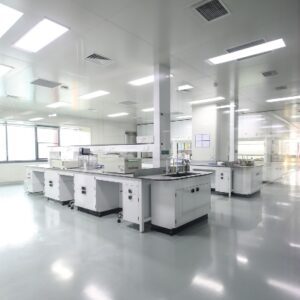
Ordering the assembled CircuitSolvers allowed ICS to use less jobsite manpower and enabled us to install every balancing valve correctly. Time to tap, I have never seen a building so consistently deliver hot water that fast! I’m impressed with the whole system. Ed Parisi Plumbing Design Manager at Industrial Commercial Systems, for LEGOLAND® Castle Hotel, Carlsbad, CA

By eliminating the conventional method of using fixed flow balancing valves and installing CircuitSolver® valves instead we were able to resolve our lack of hot water in some sectors of the hospital issue instantly. André Renaud Building Consultant at Mental Health University Institute of Quebec

Before CircuitSolver®, we would have wait times between 5-7 minutes for hot water on the higher floors. Since we have installed CircuitSolver® valves, we are getting hot water when we need it and have not had a single complaint. Robert Schrieber Maintenance Manager at Embassy Suites in Brunswick, GA

It usually takes 2-3 plumbers, 2-3 days to balance a system of this size, but by using CircuitSolver® this process was done instantly. Huge savings in terms of time and effort typically devoted to the balancing process. Stephan Thompson Plumbing Contractor at E.M. Duggan Inc. in Canton, MA

I would tell any contractor, building engineer, and mechanical engineer if you are looking at CircuitSolver®, it is simple, it is easy to use, and it works right from the get-go. Chris Watts Plumbing Service Manager at Braconier in Denver, CO
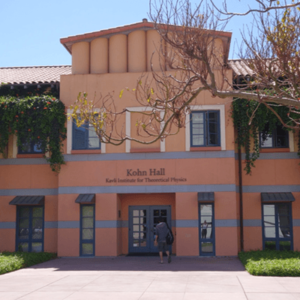
CircuitSolver® makes the initial startup so easy. When we turned it on, the valves balanced the whole system without us having to make any adjustments. We never have any issues when installing them in our projects. Plumbing Contractor Production Plus Plumbing in Vista, CA

Before we installed CircuitSolver®, we would have wait times between 5-7 minutes for hot water on the higher floors. Since we’ve installed CircuitSolver®, we have been getting hot water when needed and have not had a single complaint. It’s a great product; I’ve never used anything like it. Robert Schrieber Maintenance Manager, Embassy Suites in Brunswick, GA

The Da Vinci Project - By using CircuitSolver® balancing valves, we were able to save both time and money. The start-up process was much faster by not having to manually adjust each valve. After installation, the system balanced itself and required no maintenance. Arturo Hernandez GJM Engineering in Los Angeles, CA

CircuitSolver® is a great product - I have never used anything like it. Robert Schrieber Maintenance Manager at Embassy Suites in Brunswick, GA

Right after the installation the general manager went around the building and there was a noticeable difference with quick delivery of hot water. Andy Crossland Principal Mechanical Engineer at Crossland Engineering LLC in Honolulu, HI
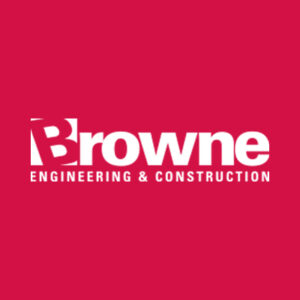
CircuitSolver®, being that it is an automatic balancing valve, just makes the job of balancing an intricate hot water system that much easier. David Texter Plumbing Engineer at Browne Engineering in Cincinnati, OH

CircuitSolver® is a great product. The valves automatically adjust to changing temperatures and pressure drops unlike manual and automatic balancing valves. Plumbing Contractor Production Plus Plumbing in Vista, CA
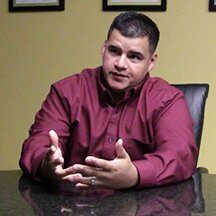
CircuitSolver® is a game changer in balancing DHWS and I would definitely use it as a standard in future projects. Matt Trevino Plumbing Engineer at DBR Engineering in San Antonio, TX

I haven’t come across another product like CircuitSolver®. Once you install the valves you never have to adjust them, unlike manual balancing valves where you have to balance every single valve you install. Richard Parker Plumbing Contractor at Pan-Pacific Mechanical in Fountain Valley, CA

CircuitSolver® was able to automatically balance the system when engineers could not. Mark Wilmink MarkCo Plumbing in Florence, KY
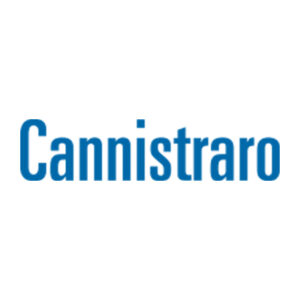
We’ve used CircuitSolver®s exclusively now for several years in every application we can. Simply stated, the product is easy to install and works very well with no issues to date. Christopher Meurer Plumbing Operations Manager at J.C. Cannistraro, LLC in Boston, MA
The University of South Florida - On startup of this install, the system automatically balanced itself in under 3 hours, all without manual labor thanks to CircuitSolver®. The plumbers actually went out a did another job, went to breakfast, and when they came back, the system was balanced. Mike Bishop V.P. of Engineering at RGD Consulting Engineers in Jupiter, FL

The advantages of the system are an efficiently balanced system, saving time testing and balancing the system, lower utility bills and reduced water usage. Luke Holding Project Engineer at The Beck Group in Dallas, TX

CircuitSolver® makes balancing the system so easy. We don’t have to manually set each line or make any adjustments. We have had absolutely no balancing issues since we started up the system. Richard Parker Plumbing Contractor at Pan-Pacific Mechanical in Fountain Valley, CA

Using CircuitSolver® makes balancing the system so easy. The valves automatically adjust themselves, so you don’t have to check each valve once installed, and there are never any callbacks for issues. Arturo Hernandez GJM Engineering in Los Angeles, CA

Simply stated, CircuitSolver® valves are easy to install and work very well with no issues to date. They’re efficient and take the time typically required to manually balance systems at the end of the project out of the equation. Christopher Meurer Plumbing Operations Manager at J.C. Cannistraro, LLC in Boston, MA

I haven’t come across another product like CircuitSolver®. Once you install them, you never have to adjust them, unlike manual balancing valves where you must balance every single valve you install. Employee – Da Vinci Project for GJM Engineering, Los Angeles, CA

I try to have CircuitSolver® specified on as many jobs as possible due to the simplicity of it. Eric McTee Plumbing Designer at ME Engineering in Golden, CO

I recommend CircuitSolver® to anyone who wants to listen; they won’t be disappointed. Once installed, there will be no reason to return to them for maintenance. CircuitSolver® eliminates the amount of work you must do in the field. Joe Sargent Onsite Plumbing Superintendent of W.E. Bowers, for new eCommerce HQ2, Arlington, VA

USC Villages Student Housing - By using CircuitSolver®valves, we saved time and money by not having to balance the system or make any adjustments. It made the process much easier and smoother. Richard Parker Plumbing Contractor at Pan-Pacific Mechanical in Fountain Valley, CA
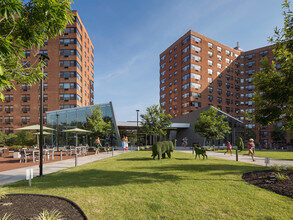
Rittenhouse Hill Apartments - We had a very complicated apartment restoration involving 47 risers. CircuitSolver® saved a lot of time, installed easily, used smaller recirculation pumps to save energy & wear, and continues performing well. Ron Miller President at Adelphia Plumbing in Philadelphia, PA

It was taking over a minute and a half to get hot water, and now it’s down to 15-20 seconds…also a huge conservation of water…it was a fairly simply retrofit. Robert Albanese Owners Representative for The Austonian in Austin, TX

Install it and save yourself the headache; CircuitSolver® is in a league of its own. Adam Podway Project Manager, Gorman-Lavelle Corp, for UH St. John’s Medical Center, Westlake, OH

CircuitSolver® valves are efficient and take the time typically required to manually balance systems at the end of the project out of the equation. We have started up systems in the afternoon to come in the next morning to find hot water perfectly balanced throughout all risers and zones. Christopher Meurer Plumbing Operations Manager at J.C. Cannistraro, LLC in Boston, MA
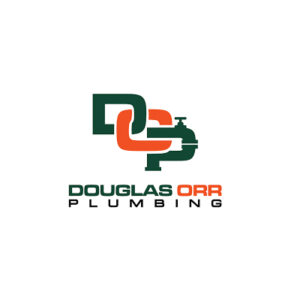
When we install CircuitSolver® valves, it corrects the client’s hot water circulation problems, and everything operates as it’s designed. We are going to keep installing them. Jason Putnam Project Manager at Douglas ORR Plumbing in Miami Springs, FL

